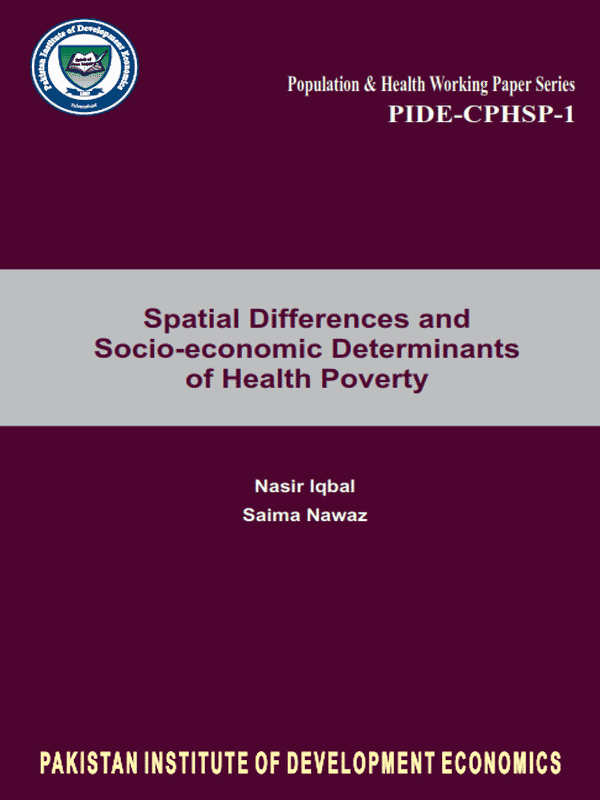
Pakistan Institute of Development Economics
- Home
Our Portals
MenuMenuMenuMenuMenuMenuMenu - ResearchMenuMenuMenuMenuMenuMenuMenu
- Discourse
- The PDR
- Our Researchers
- Academics
- Degree Verification
- Thesis Portal
- Our Portals
Spatial Differences and Socio-economic Determinants of Health Poverty
This study has three objectives: first, to construct a health poverty index (HPI) for Pakistan using household data from Pakistan Social and Living Standards Measurement (PSLM) survey 2012-13; second, to investigate the spatial differences of health poverty at sub-national level; and third, to find the socio-economic determinants of health poverty using the logistic regression model. Health poverty is defined as lack of access to health services. Five different dimensions are used to construct the HPI using the Alkire Foster (AF) Method. Results show that the head count health poverty is 41 percent in Pakistan. Further, the ratio is very high in rural areas (50 percent) as compared to urban areas (22 percent). Provincial analysis shows that Punjab is the least poor of the provinces (36 percent) while Balochistan is the poorest (62 percent). The majority of the households are deprived in terms of cost of health services, post-natal care and child immunisation. Empirical analysis shows that various socio-economic variables such as income, regional variation, education and awareness are important in explaining health poverty. To eradicate health deprivation, areas-specific and dimension-specific policies are required to make efficient use of scarce resources.



